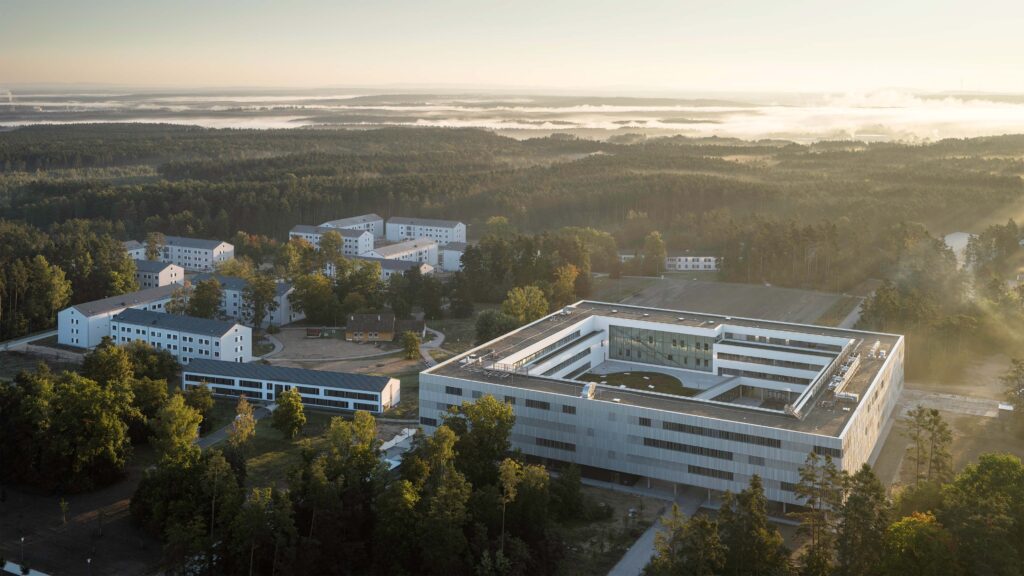
Yesterday, the new teaching building of the Air Force Officers’ School was officially inaugurated in Roth. The new building is at the heart of the urban masterplan, which our firm developed and implemented for the school’s new location.
With the relocation from Fürstenfeldbruck to Roth, a campus for around 2,000 soldiers and instructors has been created, including accommodation for 800 officer candidates. The teaching building forms both the spatial and symbolic center – it stands at the highest point of the site and is intersected by a “runway” that connects the entire campus.
Architecturally, the building draws on aviation themes: technology, atmosphere, and structure. The facade, made of movable metal louvers, evokes wings and air brakes, while the interior captures the dynamics of flying through light, transparency, and spatial sequencing. A striking cascade staircase – the “Stairway to Heaven” – leads into the large atrium, where aircraft models and the military history teaching collection are displayed.
Among the guests at the opening were Bavarian Interior Minister Joachim Herrmann and Minister President Markus Söder, who, in his speech, highlighted the scale of the new campus and its state-of-the-art training facilities. During the ceremony, Mr. Gerber presented the plaque marking the building’s inauguration.
The auditorium, with its dome adorned like a “starry sky,” the camouflage-style greenery of the courtyard, and the “Art in Architecture” projects create an atmosphere that unites knowledge, history, and identity.
Photo: © HGEsch
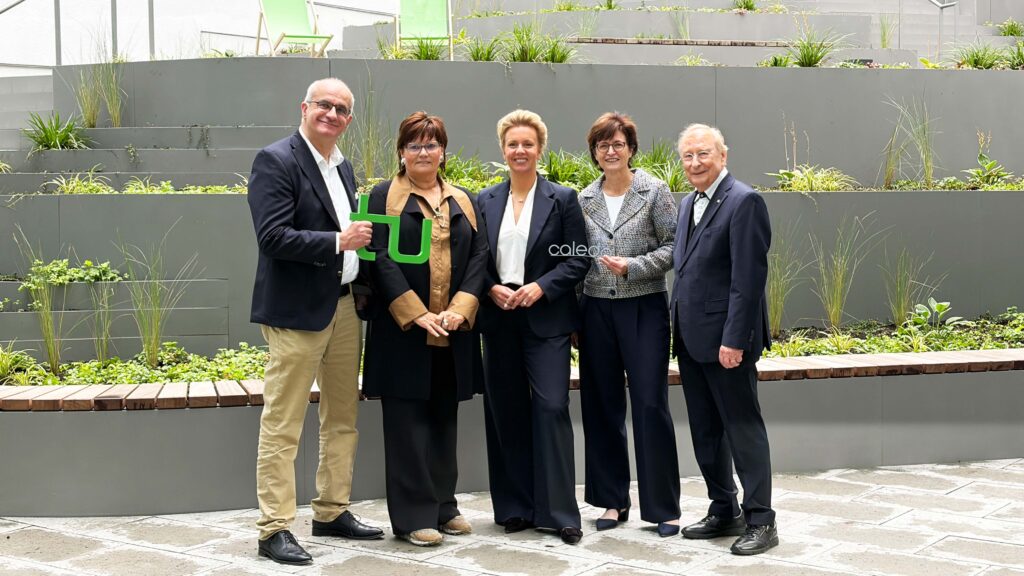
The CALEDO research building – Center for Advanced Liquid-Phase Engineering – was officially inaugurated on the campus of the Technical University of Dortmund with a ceremonial event. In this new facility, liquid phases for environmentally friendly and innovative processes in chemistry, biotechnology, and pharmaceutical research will be studied and developed.
Designed by Gerber Architekten, the building blends harmoniously into the campus architecture with its brick façade. A central courtyard with a terraced green area creates open sightlines and encourages interaction between research groups. The clear building layout provides both orientation and aesthetic expression – functional, open, and sculptural. With approximately 3,600 square meters of laboratory and office space, CALEDO offers optimal conditions for more than 100 researchers to conduct interdisciplinary cutting-edge research in environmentally friendly processes in chemistry, biotechnology, and pharmaceutical sciences.
The opening ceremony was attended by Ina Brandes, Minister for Culture and Science of North Rhine-Westphalia, Prof. Manfred Bayer, Rector of TU Dortmund, Prof. Gabriele Sadowski, spokesperson for CALEDO, and Gabriele Willems, Managing Director of BLB NRW. During the event, Prof. Gerber presented a plaque to Prof. Sadowski, marking the start and completion of the building, along with an artwork by the artist Horst Linn titled Strong 2.
CALEDO thus represents the interplay of architecture, research, and innovation – a place where knowledge is given space.
Group photo, from left to right: Manfred Bayer (Rector of TU Dortmund), Gabriele Willems (Managing Director of BLB NRW), Ina Brandes, Minister for Culture and Science of the State of NRW, Prof. Gabriele Sadowski (Spokesperson of CALEDO), Prof. Eckhard Gerber
©Gerber Architekten
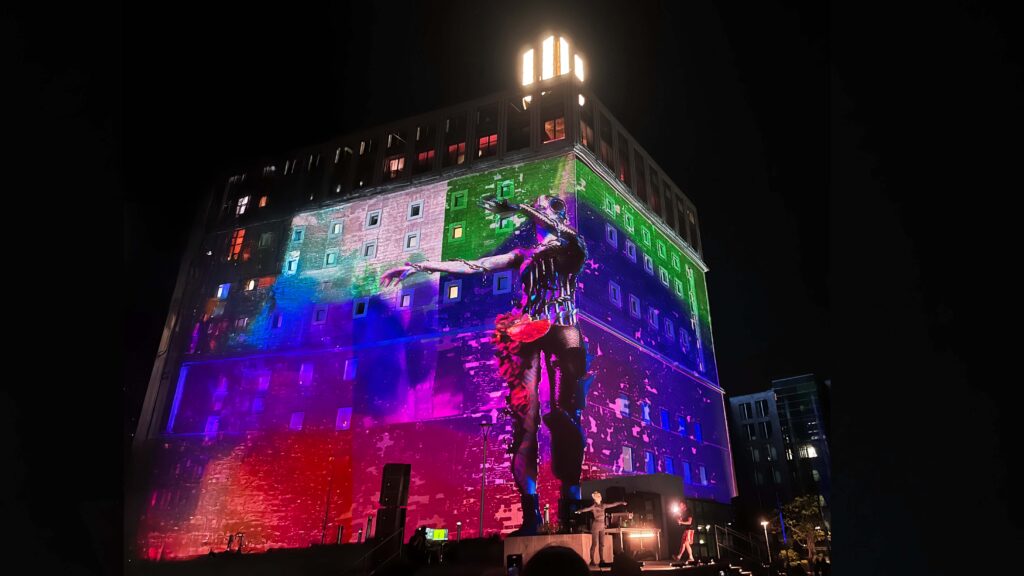
On September 20, 2025, the 25th DEW21 Museum Night transformed Dortmund into a vibrant cultural festival. More than 500 events at around 40 venues impressively showcased the diversity of the city’s arts and culture scene.
One highlight was the artistic projection on the Dortmunder U. The tower, visible from afar, is considered both a landmark of the city center and a significant example of early 20th-century industrial architecture in the Ruhr region. During Museum Night, its striking silhouette became a projection surface. The interplay of light, image, and space turned the architecture itself into part of the event.
The Dortmunder U stands like few other buildings for the city’s transformation – from its industrial heritage to a place for culture, science, and technology. The project illustrates how repurposing historical architecture can shape new urban identity. As part of the European Capital of Culture RUHR.2010, Gerber Architekten redesigned the former industrial building and developed it into a prominent cultural venue.
During Museum Night, it became clear how profoundly architecture shapes cultural life and how it makes Dortmund visible as a forward-looking city.
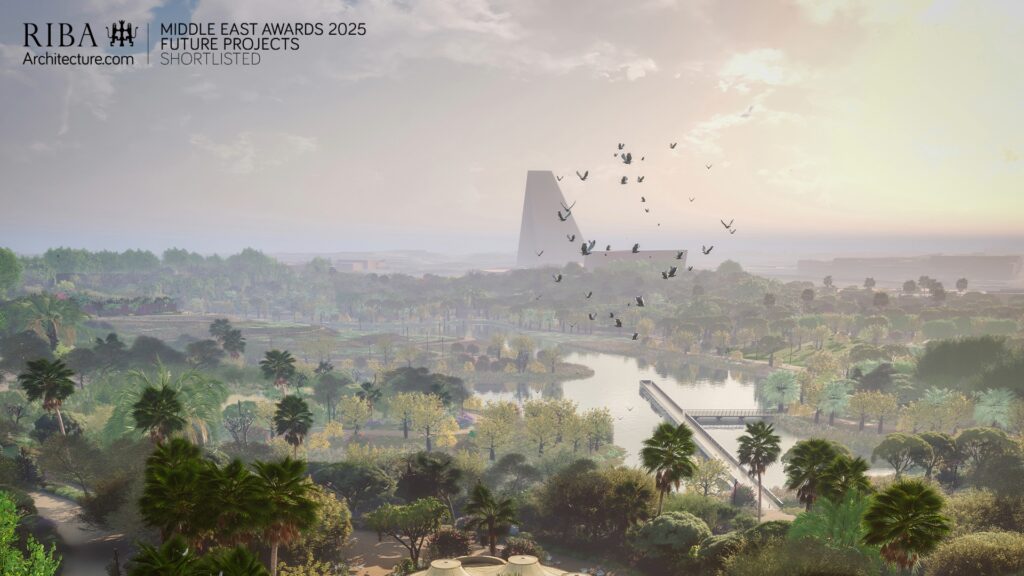
The RIBA Middle East Awards are presented by the Royal Institute of British Architects. They rank among the most prestigious international architecture prizes and honor projects that demonstrate outstanding architectural quality, innovation, and social relevance in the Middle East.
With King Salman Park, the former airport site in Riyadh is being transformed into a 16.7 km² green oasis in the middle of the desert. Focusing on climate-resilient planting, sustainable water management, and revitalized soils, the project will become one of the largest urban parks worldwide. Our nomination in the Future Projects category highlights the global importance of sustainable landscape architecture that unites ecological responsibility with urban quality of life.
The landscape design, master planning, and detailed planning of King Salman Park are being carried out by a joint venture led by Gerber Architekten, together with the engineering partners Buro Happold and Setec.
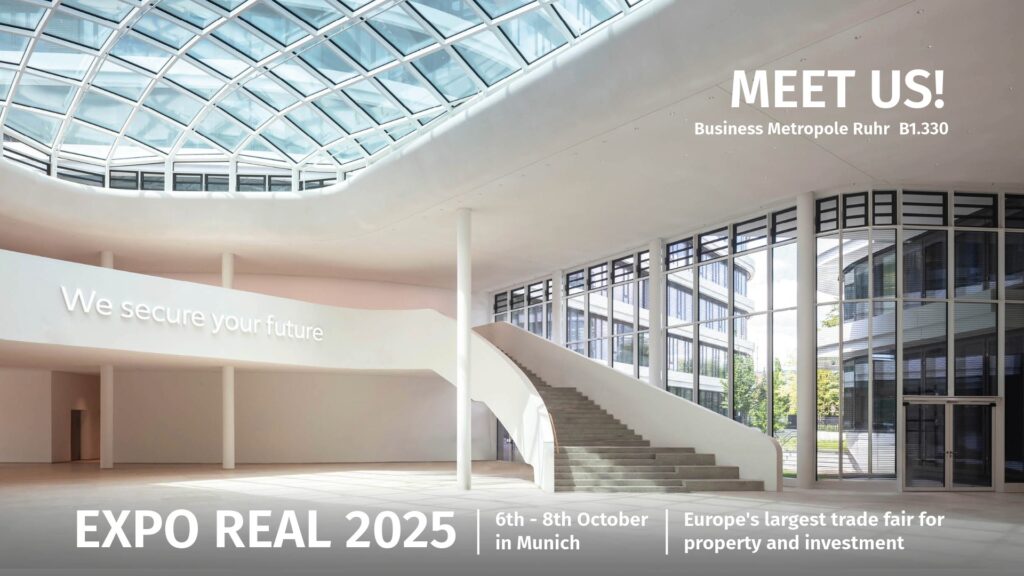
Europe’s largest trade fair for real estate and investment will take place from October 6 to 8, 2025, in Munich. As every year, we will be represented at the joint stand of the Business Metropole Ruhr (Stand B1.330) and look forward to your visit.
We will present a selection of our projects – including the recently completed Allianz Park Stuttgart, a climate-conscious office campus with an open plaza, Sky Lounge, and workspaces for 4,500 employees. Learn more about the design of modern work environments, projects from all disciplines of architecture, our expertise in general planning, and our international projects.
We look forward to your visit!

With the new Kõrgaed development in Tallinn, we were awarded 2nd prize in an international competition. The project presents a holistic vision for transforming the former Krull factory site into a contemporary urban quarter, combining spatial openness, human-scale urbanism, and the adaptive reuse of industrial heritage. The mixed-use ensemble of residential and commercial buildings along with an apartment hotel demonstrates how architecture can create new forms of community, sustainability, and urban vibrancy by reimagining the courtyard and ground floor.
At the heart of the design is a courtyard lifted to the second floor. It becomes a green, tranquil communal garden for residents – directly accessible from their homes – while the ground floor remains fully dedicated to public and commercial uses. This move transforms a challenging programmatic conflict into a defining architectural quality.
On the ground floor, 38 flexible commercial units with terraces, arcades, and storefronts enliven the urban realm. Above, 39 timber-clad apartments form a modular structure that ensures daylight, privacy, and adaptable layouts. Recycled building materials from the local context, a hybrid concrete-and-timber construction system, and biodiverse landscaping reinforce the project’s sustainable approach.
In this way, the design bridges past and future, showing how urban density, ecological responsibility, and cultural identity can be brought into balance.

Completed in 2022, the Multiscale Imaging Centre (MIC) at the University of Münster brings together cutting-edge biomedical imaging technologies. 200 researchers from medicine, physics, biology, mathematics, computer science, and chemistry explore how cells behave within organisms. The building references Münster’s traditional brick architecture, yet its recessed and projecting volumes and the façade, broken up by horizontal window bands, give it a distinctly monolithic, sculptural presence.
Inside, the spacious foyer sets the tone. Beneath a glass roof, staircases cross the open space diagonally, while the adjoining courtyard with its suspended garden draws light and openness into the heart of the building. This central space offers a remarkable quality of stay and demonstrates how architecture can create room for knowledge – making science tangible for both visitors and researchers.
The importance of such spaces is underlined by the year-round exhibition unSICHTBAR (“inVISIBLE”), curated by MIC researchers. It presents striking images of cells, tissues, and organisms, produced with advanced microscopy, magnetic resonance imaging, and positron emission tomography. A further highlight is the twelve-metre-high wall installation Auf | Lösung by Cordula Hesselbarth, artist and professor of scientific illustration.
Thus, the architecture of the foyer does far more than define an entrance. It creates an open forum for exchange – bringing science out from behind laboratory doors and presenting it in a way that is accessible, visible, and inspiring.
Link to the exhibition at the University of Münster
Photo (left): © Jürgen Landes
Photo (right): © Uni Münster – Erk Wibberg

The SUSTech School of Medicine and Affiliated Hospital in Shenzhen, designed by Gerber Architekten, received an Honorable Mention in the “Hospital/Medical Centers” category at the 2025 International Architecture Award (learn more). In this highly competitive category, our project stood out among more than 500 international submissions – a recognition that underscores the innovative character of the design.
Our concept unites a medical faculty, an 800-bed teaching hospital, a library, as well as residential, sports, and recreational facilities into a holistic health campus. The buildings are oriented towards the surrounding landscape between mountain ridges and a river, creating an open and inviting connection between architecture and nature. Green podium levels and vertical planting integrate the complex harmoniously into its setting, fostering a healing and inspiring atmosphere for patients, students, and staff alike.
The award is presented by the Chicago Athenaeum Museum of Architecture and Design in collaboration with the European Centre for Architecture, Art, Design and Urban Studies. It is one of the most prestigious international distinctions in architecture, honoring outstanding projects that set global benchmarks in design, functionality, and urban integration.